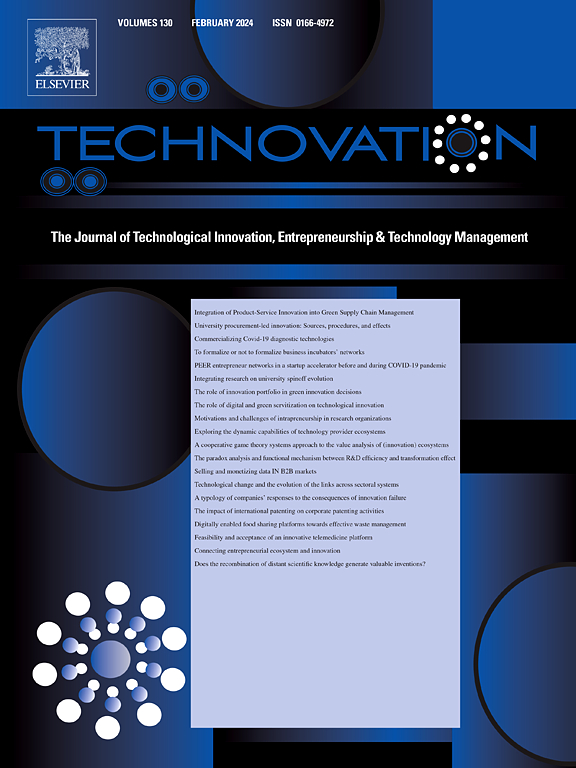Examining the effect of a firm’s supply chain network power on innovation: Being a broker or a gossiper
IF 10.9
1区 管理学
Q1 ENGINEERING, INDUSTRIAL
引用次数: 0
Abstract
Innovation is the intrinsic driver of a firm's sustainable development and success. This study investigates an approach to improve firm innovation from a supply chain network perspective. We collected data from 2002 to 2021 for Chinese listed firms and found that the higher a firm's supply chain network power, measured by a higher PageRank value, the more enhanced its innovation capability. This effect is moderated by relationship complexity (e.g., connection properties of firms within the same network) and operational complexity (e.g., size difference across networks). In terms of relationship complexity properties, we find that betweenness centrality and closeness centrality have opposite effects. A firm's betweenness centrality enhances the impact of the firm's supply chain network power on innovation, whereas the closeness centrality of a firm diminishes the relationship between the firm's supply chain network power and innovation. Regarding operational complexity properties, the effect of a firm's supply chain network power on its innovation will be more significant in a larger network. The findings of this study encourage firms to improve their innovation capabilities by enhancing their influence over and position within the supply chain network, especially when the network is large and complex. More importantly, firms should play the role of brokers, rather than gossipers, in supply chain networks to better utilize their power.
检验企业供应链网络力量对创新的影响:当经纪人还是说闲话者
创新是企业持续发展和成功的内在动力。本研究从供应链网络的角度探讨企业创新的提升途径。我们收集了2002年至2021年中国上市公司的数据,发现企业的供应链网络力量越高(以更高的PageRank值衡量),其创新能力越强。这种影响被关系复杂性(例如,同一网络内公司的连接属性)和操作复杂性(例如,跨网络的规模差异)所调节。在关系复杂性属性方面,我们发现中间性中心性和亲密性中心性具有相反的作用。企业的中间性中心性增强了企业供应链网络力量对创新的影响,而企业的亲密性中心性减弱了企业供应链网络力量与创新的关系。就经营复杂性属性而言,企业的供应链网络力量对其创新的影响在更大的网络中更为显著。本研究的结果鼓励企业通过提高其在供应链网络中的影响力和地位来提高其创新能力,特别是当网络庞大而复杂时。更重要的是,企业应该在供应链网络中扮演经纪人的角色,而不是八卦者,以更好地利用自己的权力。
本文章由计算机程序翻译,如有差异,请以英文原文为准。
求助全文
约1分钟内获得全文
求助全文
来源期刊

Technovation
管理科学-工程:工业
CiteScore
15.10
自引率
11.20%
发文量
208
审稿时长
91 days
期刊介绍:
The interdisciplinary journal Technovation covers various aspects of technological innovation, exploring processes, products, and social impacts. It examines innovation in both process and product realms, including social innovations like regulatory frameworks and non-economic benefits. Topics range from emerging trends and capital for development to managing technology-intensive ventures and innovation in organizations of different sizes. It also discusses organizational structures, investment strategies for science and technology enterprises, and the roles of technological innovators. Additionally, it addresses technology transfer between developing countries and innovation across enterprise, political, and economic systems.
 求助内容:
求助内容: 应助结果提醒方式:
应助结果提醒方式:


